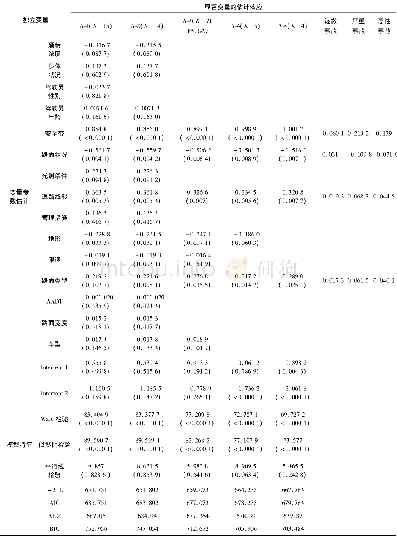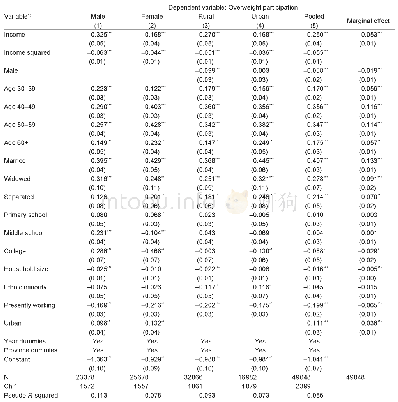《Table 4 Probit estimation results for overweight cessation》
 提示:宽带有限、当前游客访问压缩模式
提示:宽带有限、当前游客访问压缩模式
本系列图表出处文件名:随高清版一同展现
《Low-income and overweight in China:Evidence from a life-course utility model》
1) Time controls include year dummies for 1991,1993,1997,2000,2004,2006,2009,and 2011.Regional controls include dummies for Chongqing,Beijing,Liaoning,Heilongjiang,Shanghai,Jiangsu,Shandong,Henan,Hubei,Hunan,Guangxi,and Guizhou.Source:aut
The estimation results for the relation between income and overweight cessation are shown in Table 4.As expected,the negative coefficient of income and positive coefficient of income squared are both statistically significant,indicating the likelihood of‘quitting’overweight would reduce with increasing income but at a decreasing rate.As shown in Fig.5,there exists a U-shape relation between income and overweight cessation and the critical point is approximately 22 308 CNY.However,almost 91%of the adults considered in our pooled sample are beneath this threshold.Furthermore,the evidence from the marginal effect of household income on overweight cessation shows that a 10 000 CNY growth in household income would cause a decrease in the likelihood of overweight cessation by roughly 4.7%when controlling all other independent variables at the mean values.The likelihood of ceasing overweight would consistently increase once the household income is larger than the critical point of 22 307 CNY,while there are no more than 10%of adults whose household incomes are higher than this threshold.
| 图表编号 | XD0082719800 严禁用于非法目的 |
|---|---|
| 绘制时间 | 2019.08.20 |
| 作者 | REN Yan-jun、Bente Castro Campos、Jens-Peter Loy、Stephan Brosig |
| 绘制单位 | Institute of Agricultural Economics, University of Kiel、Leibniz Institute of Agricultural Development in Transition Economies、Institute of Agricultural Economics, University of Kiel、Institute of Agricultural Economics, University of Kiel、Leibniz Institute |
| 更多格式 | 高清、无水印(增值服务) |





